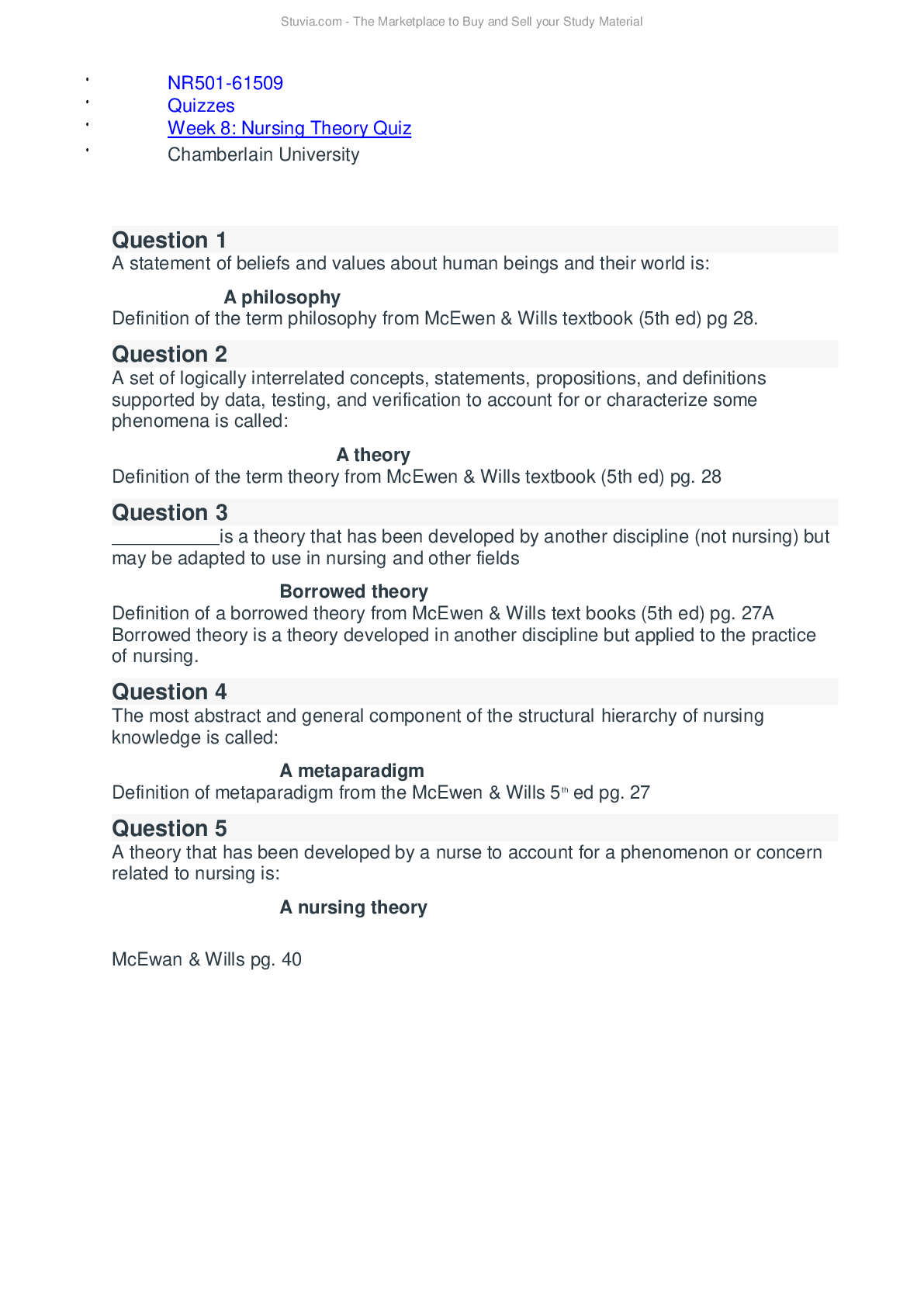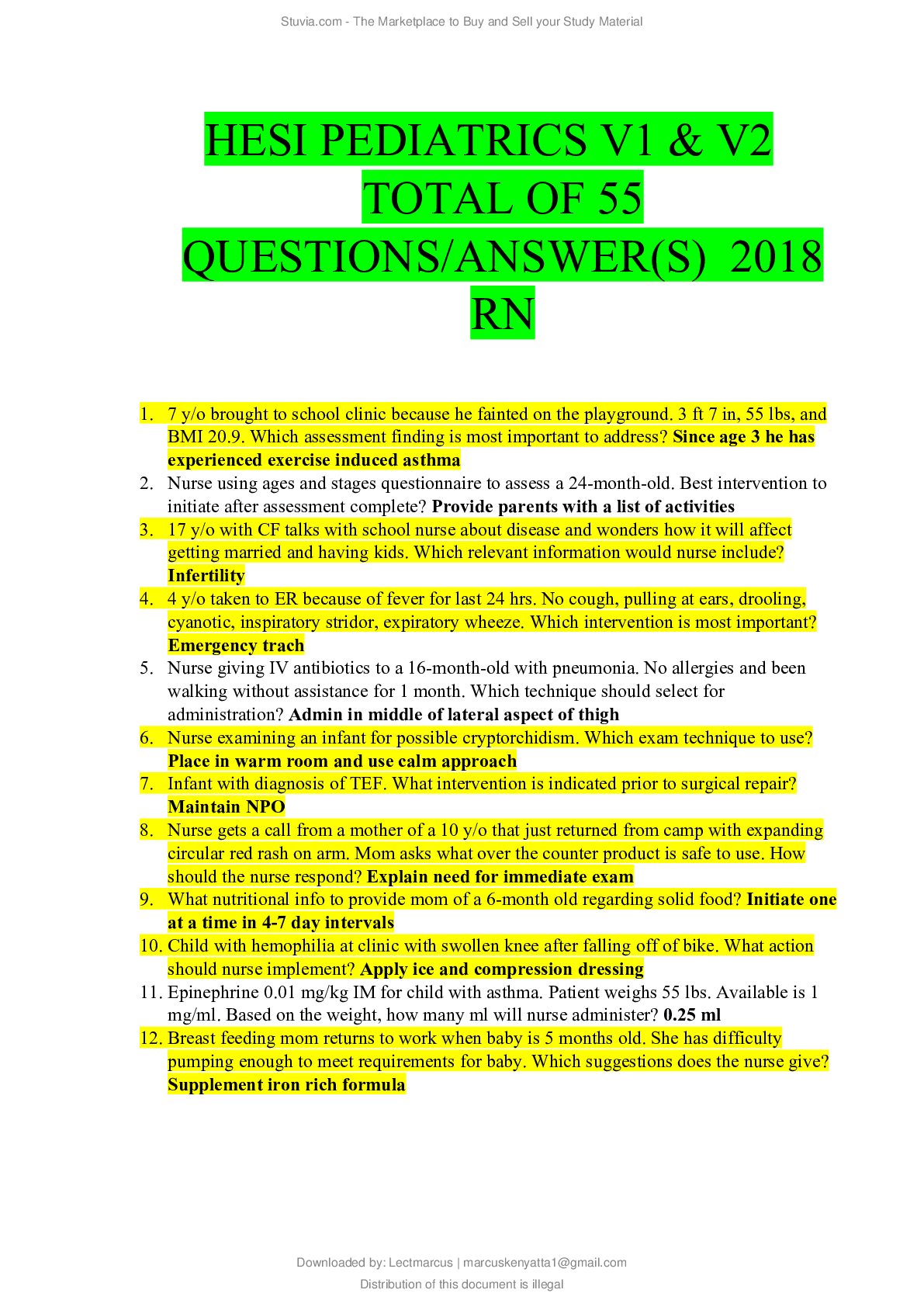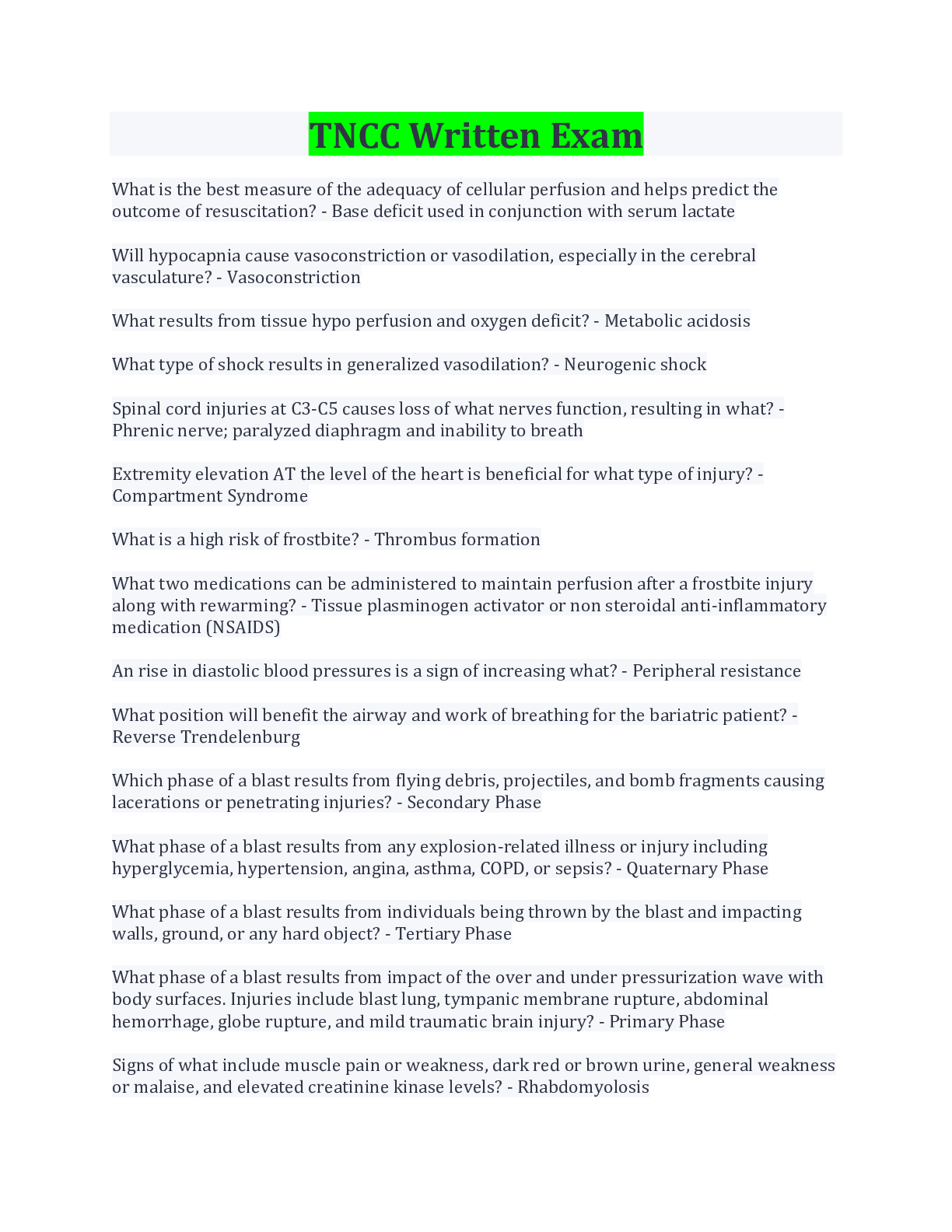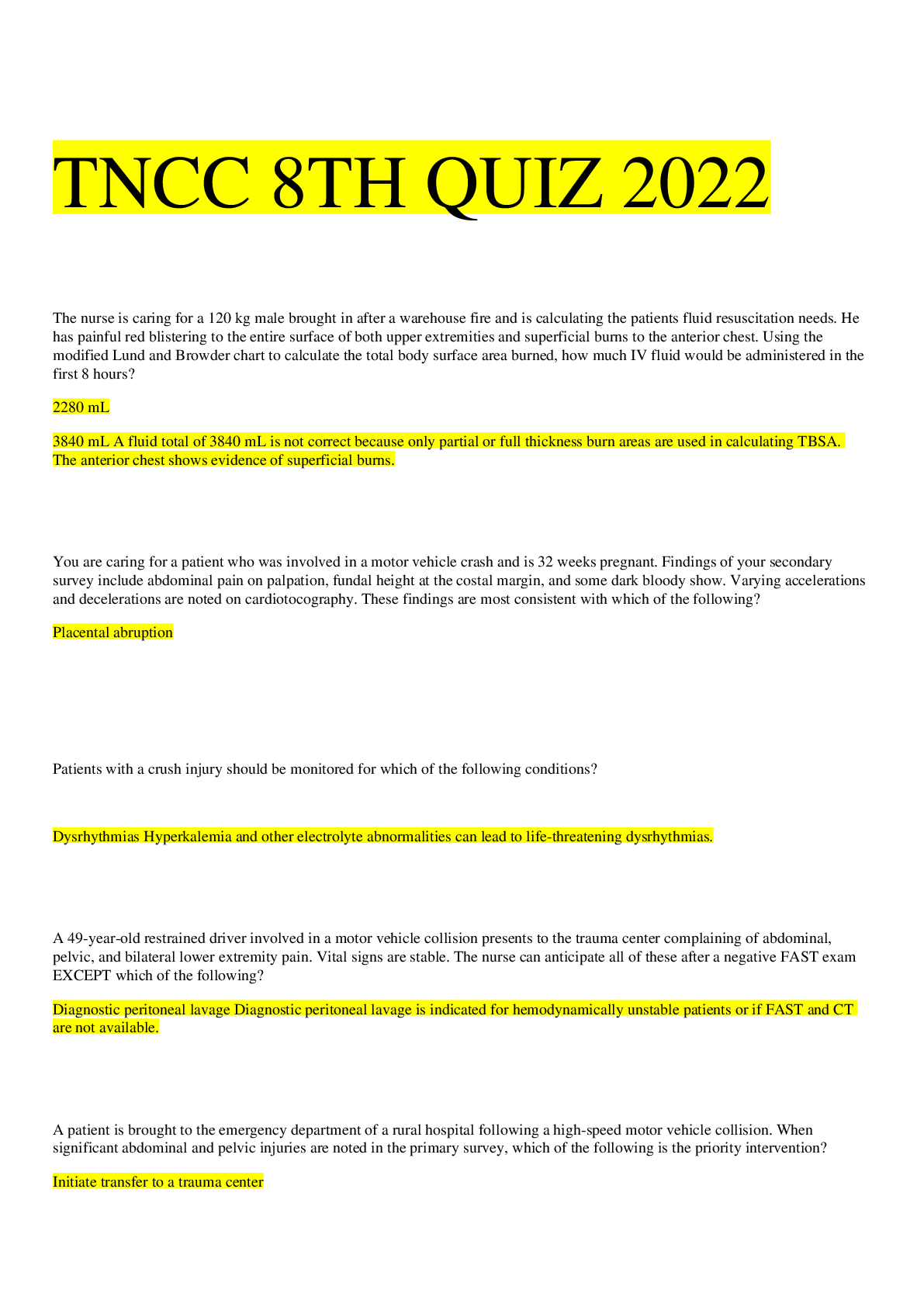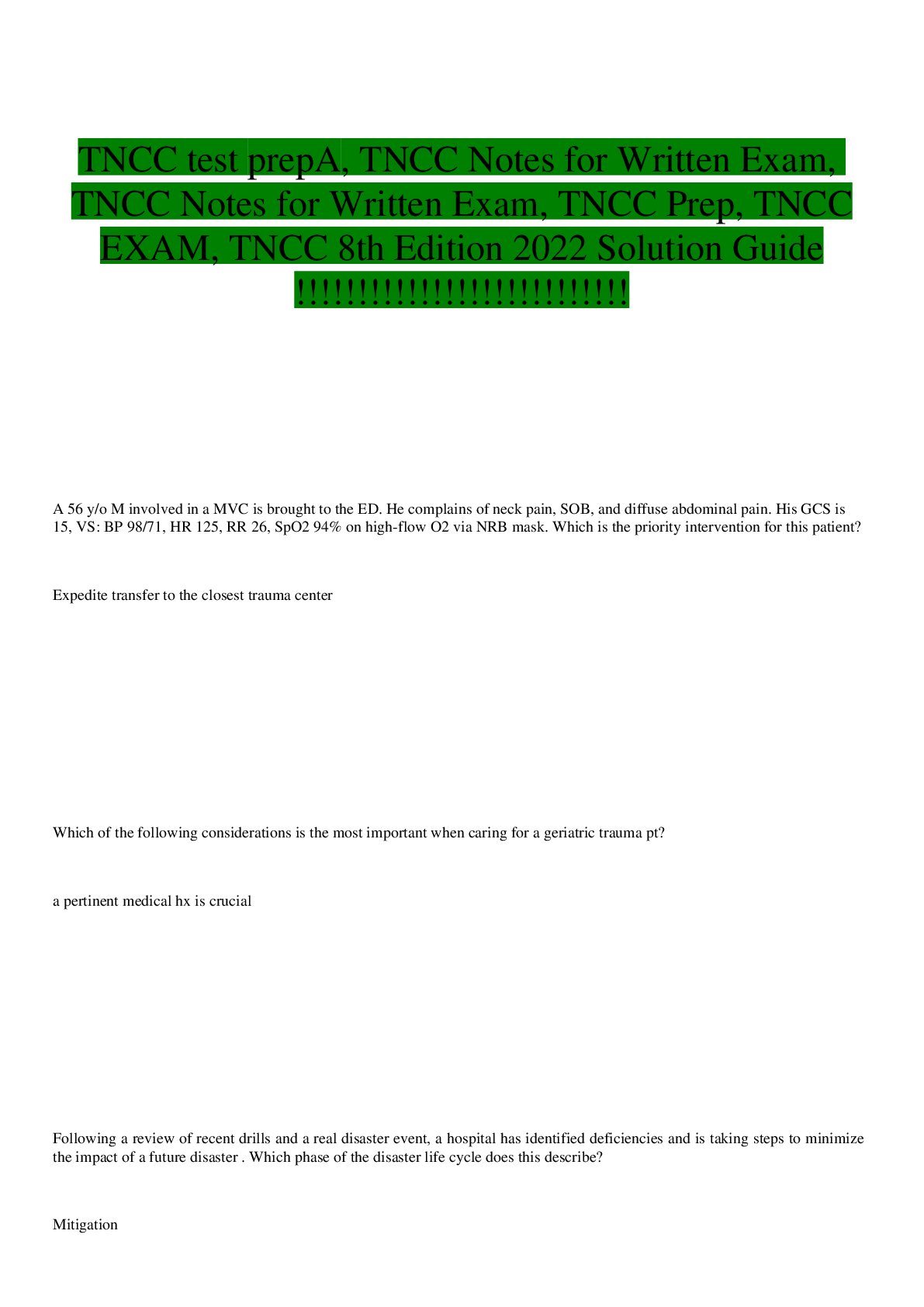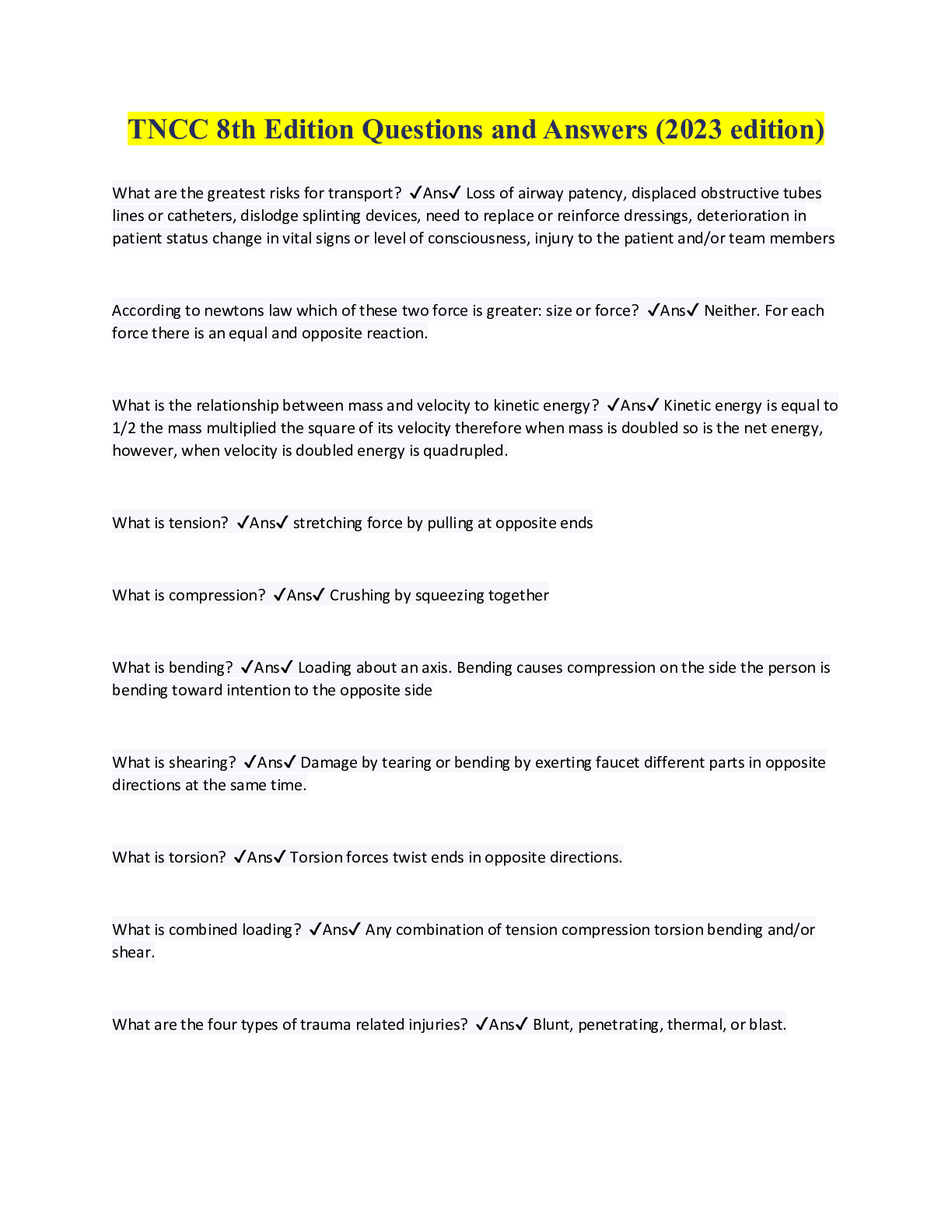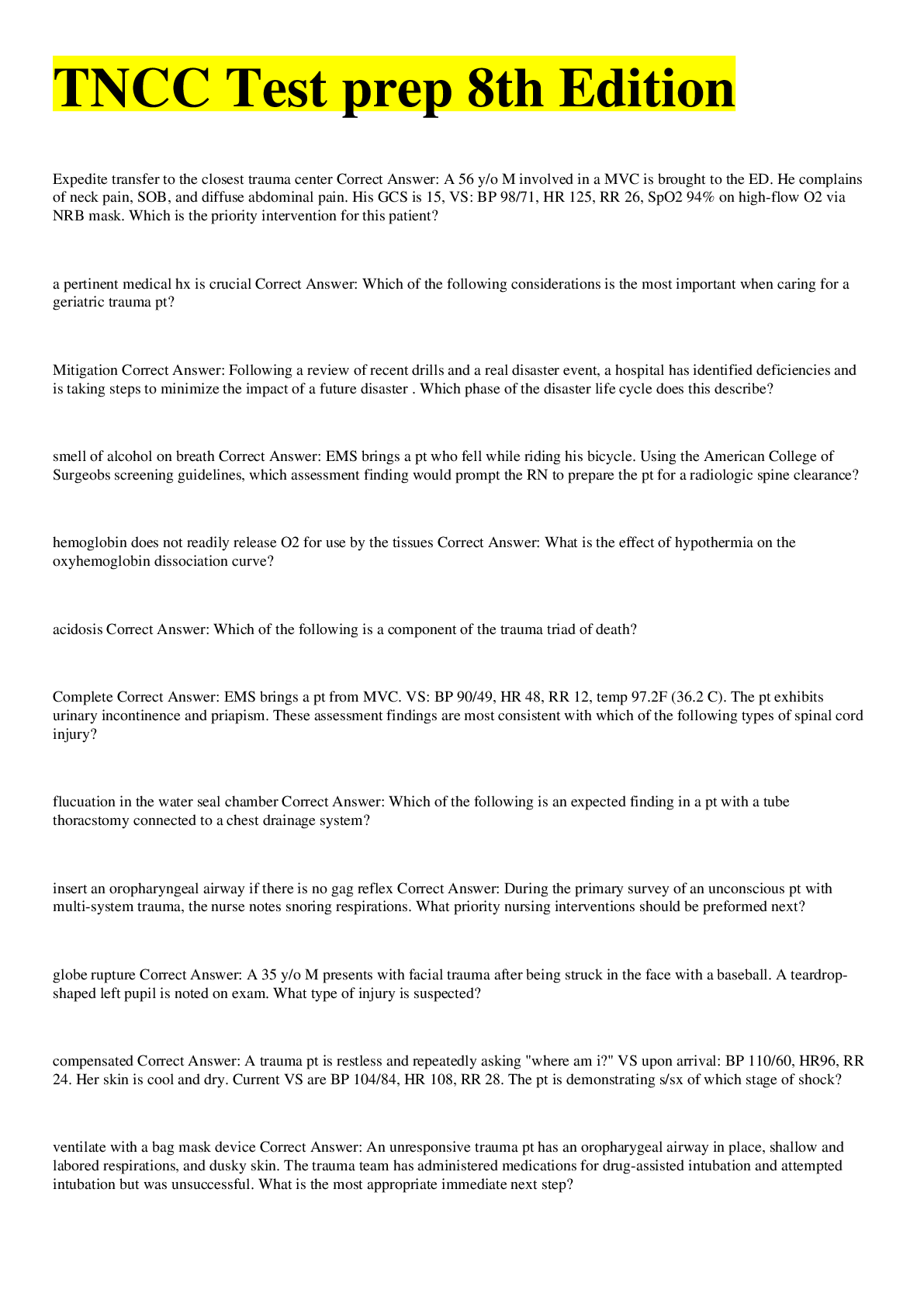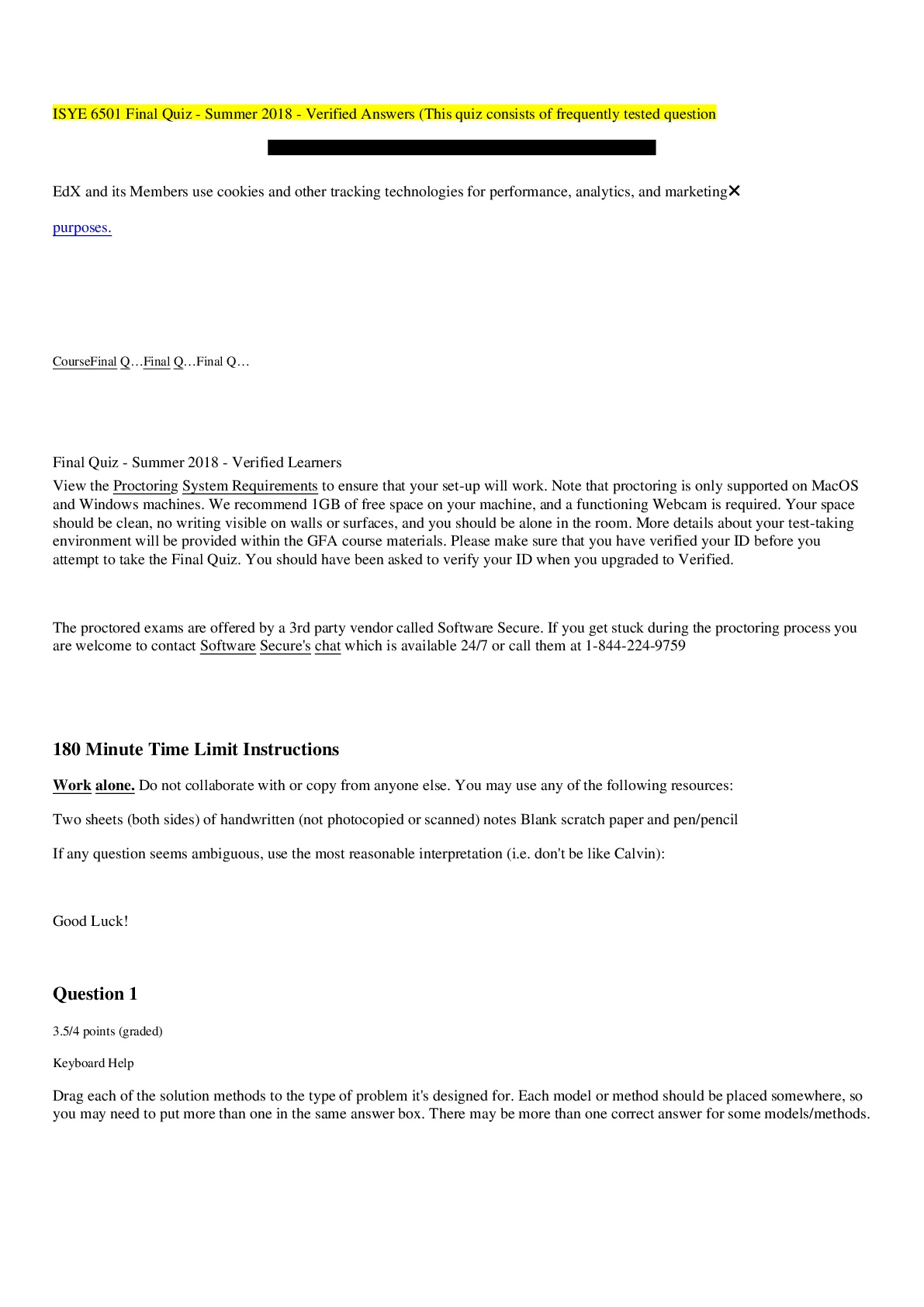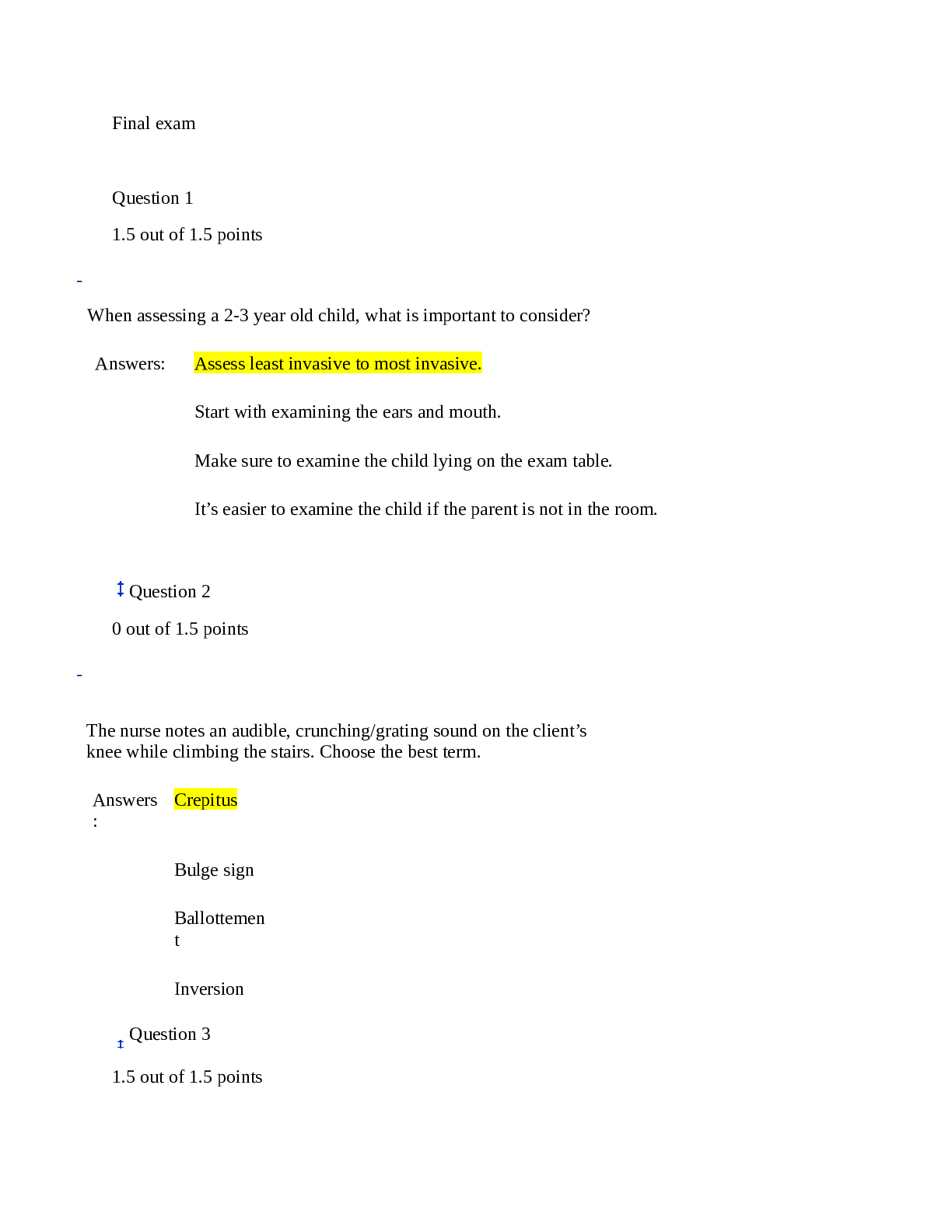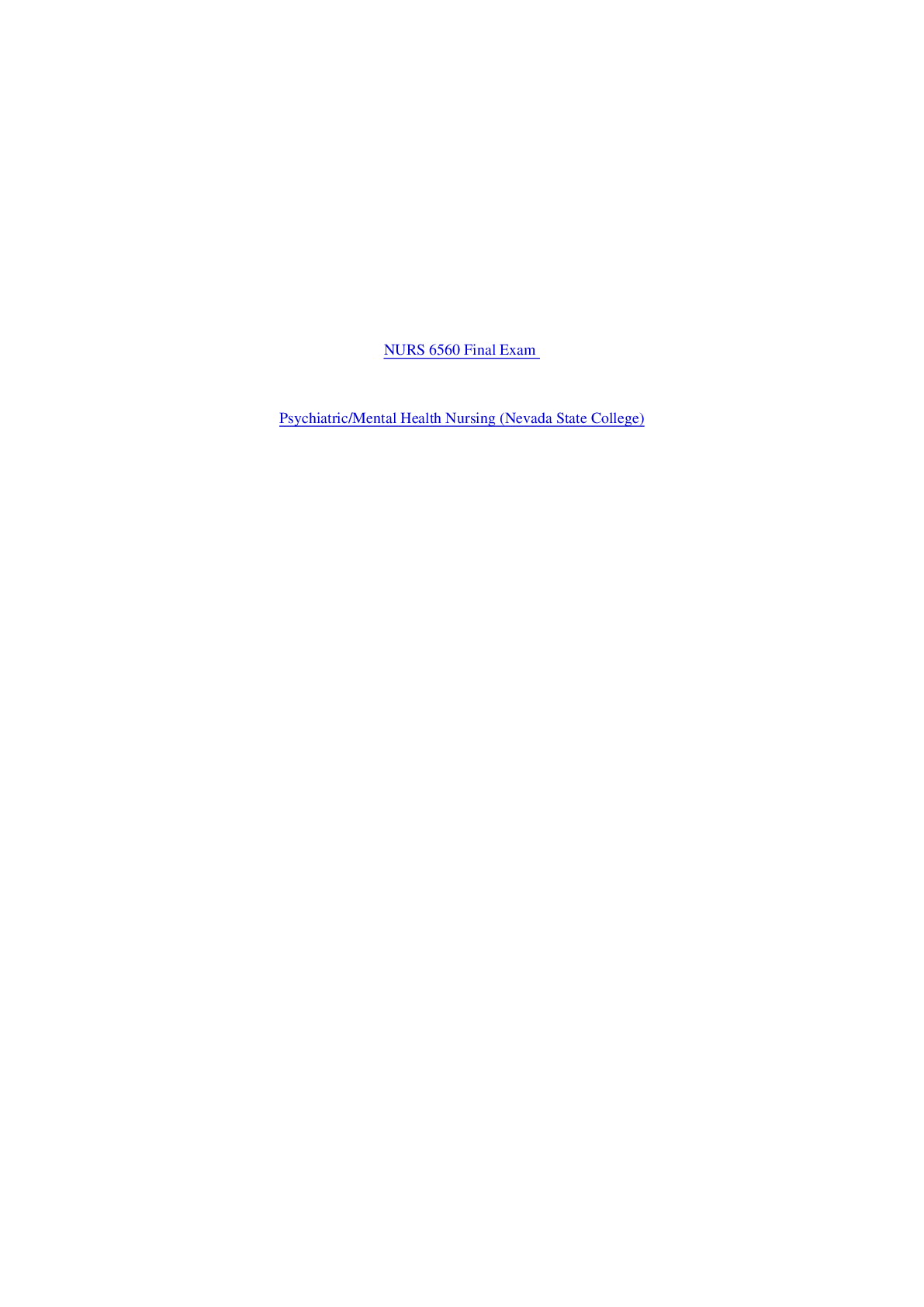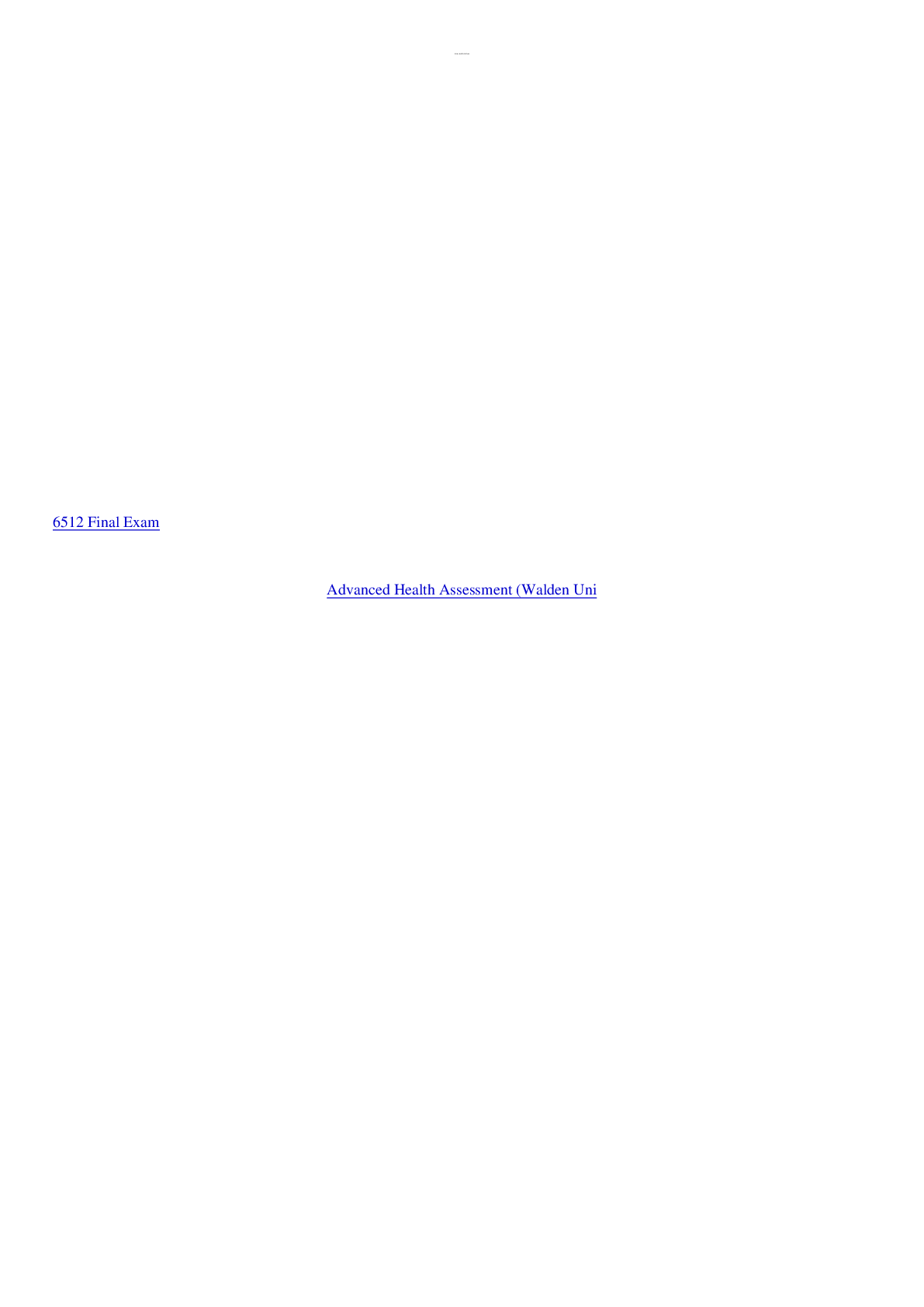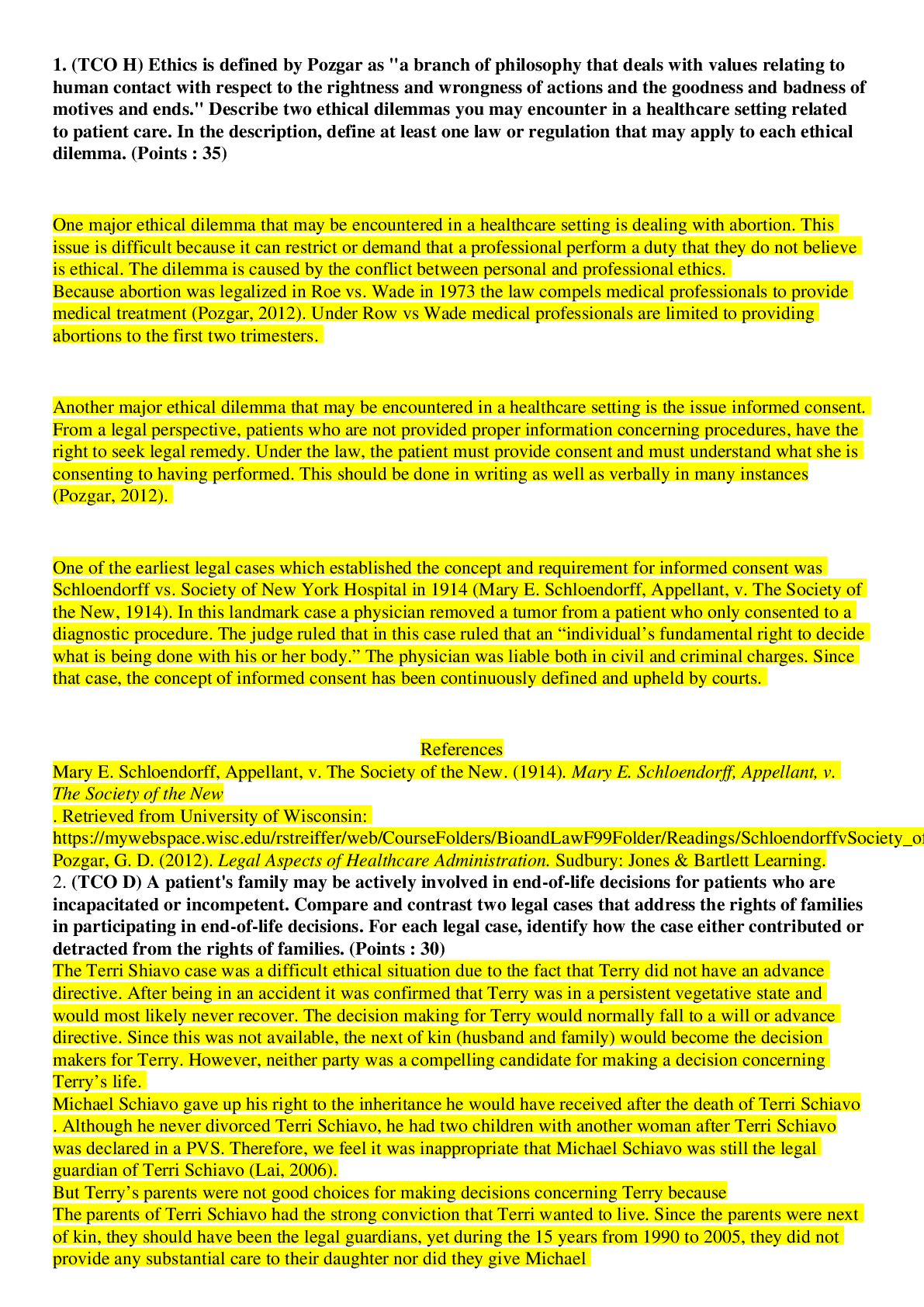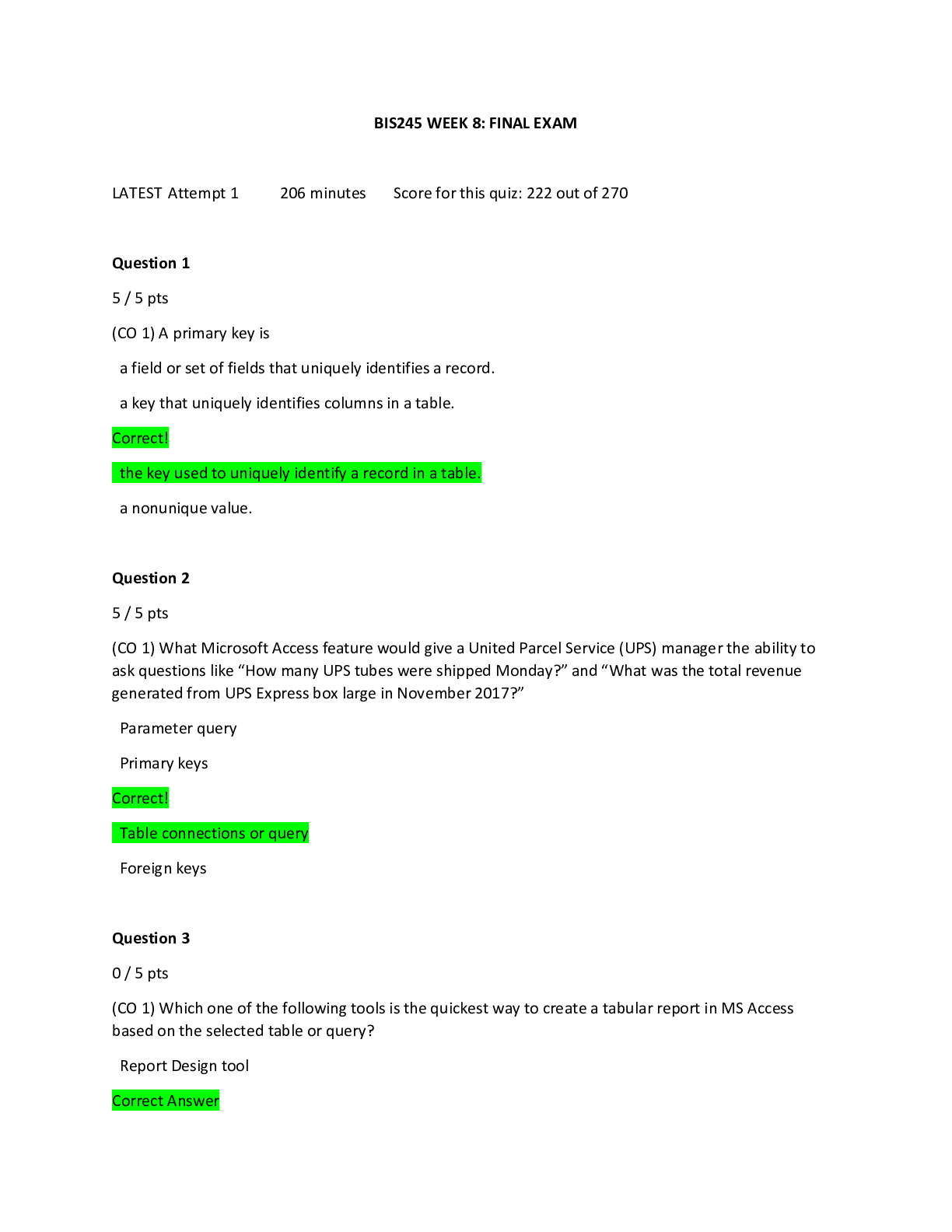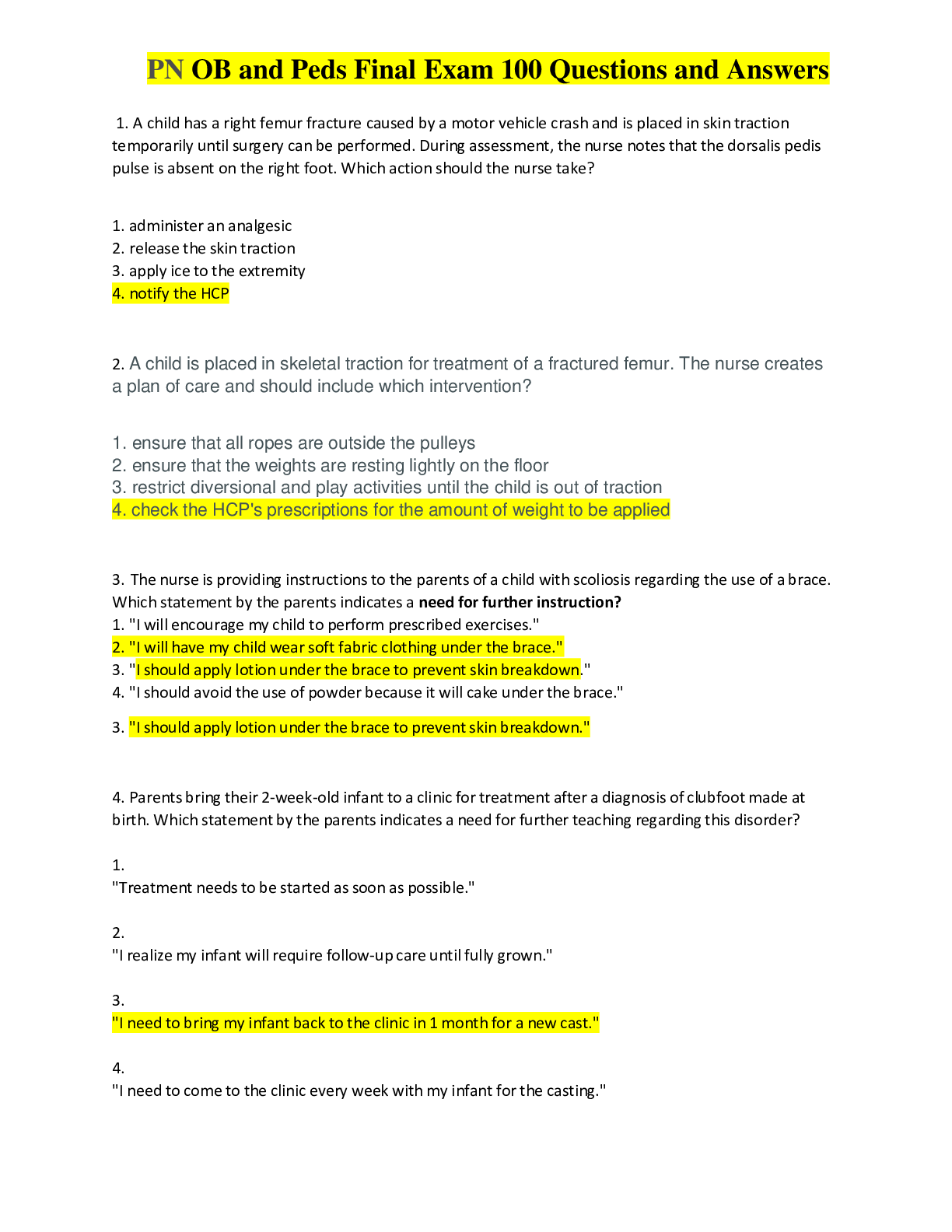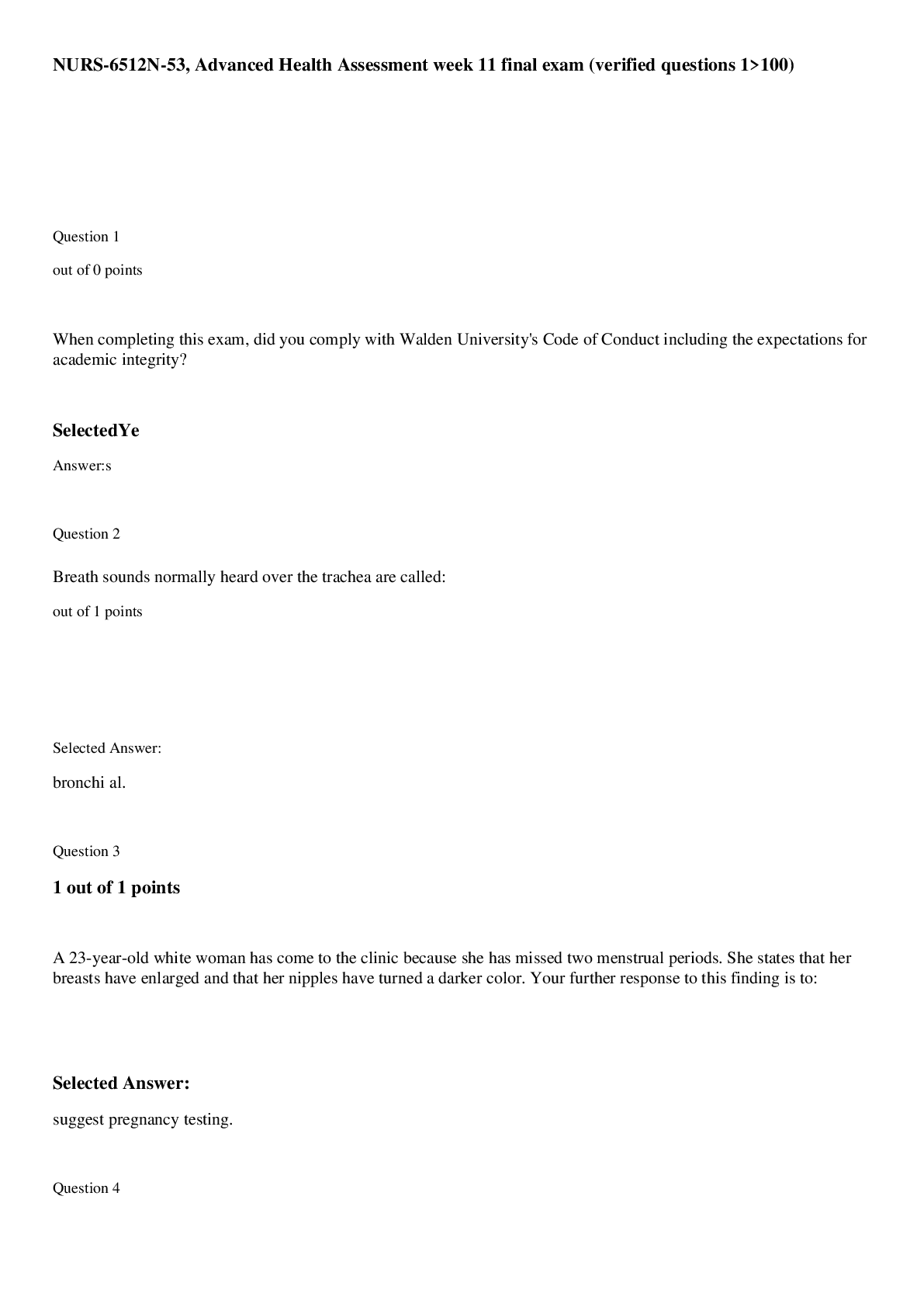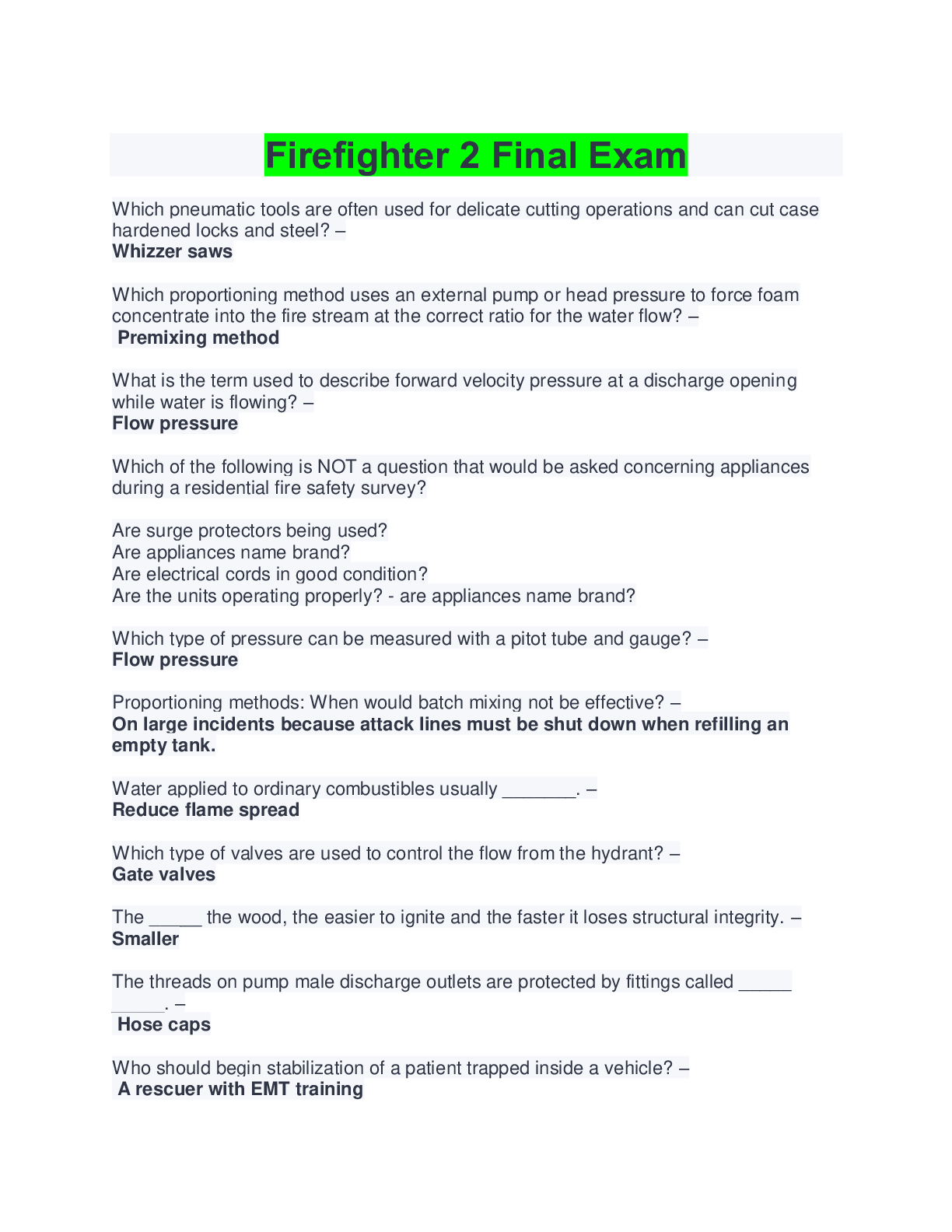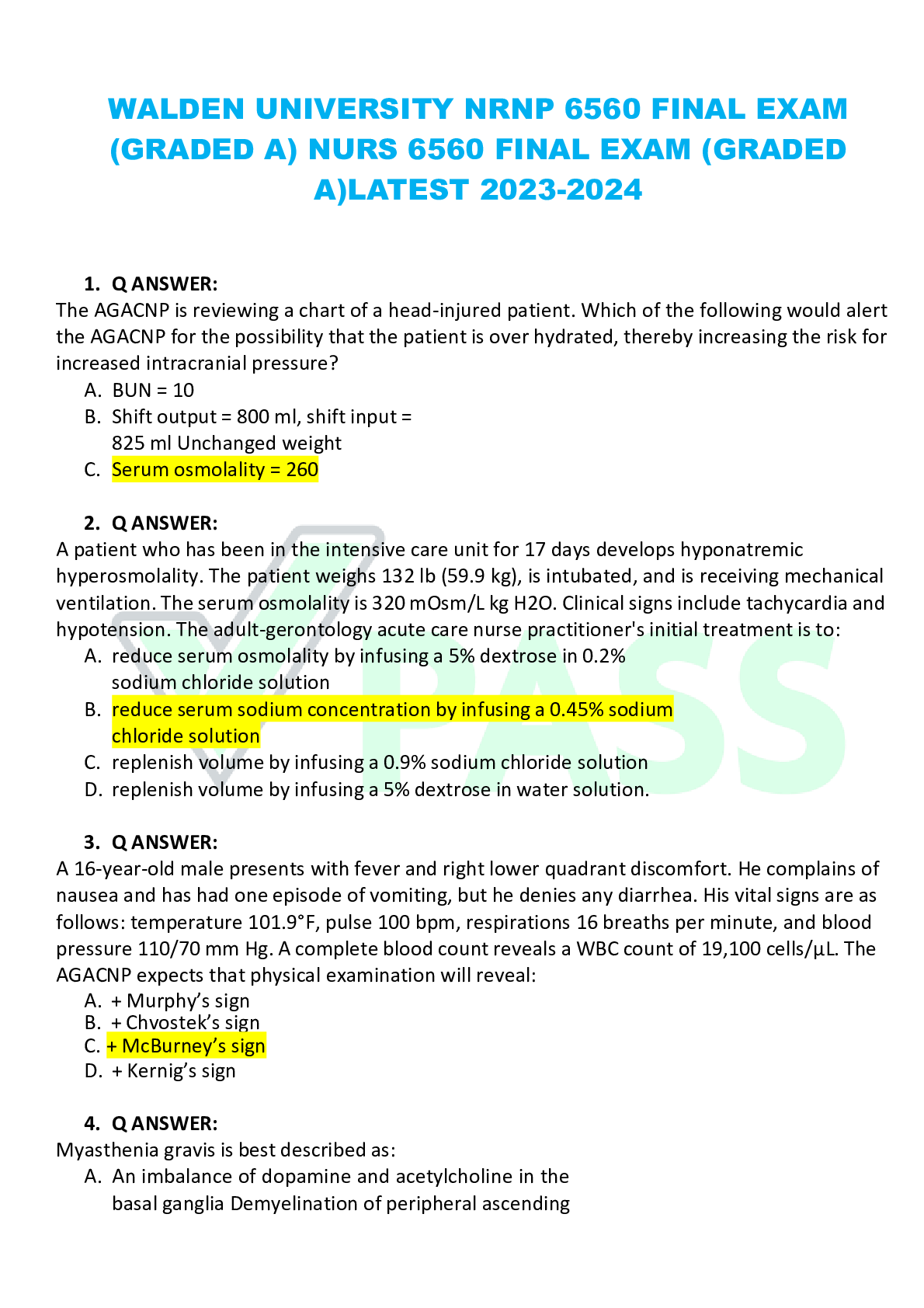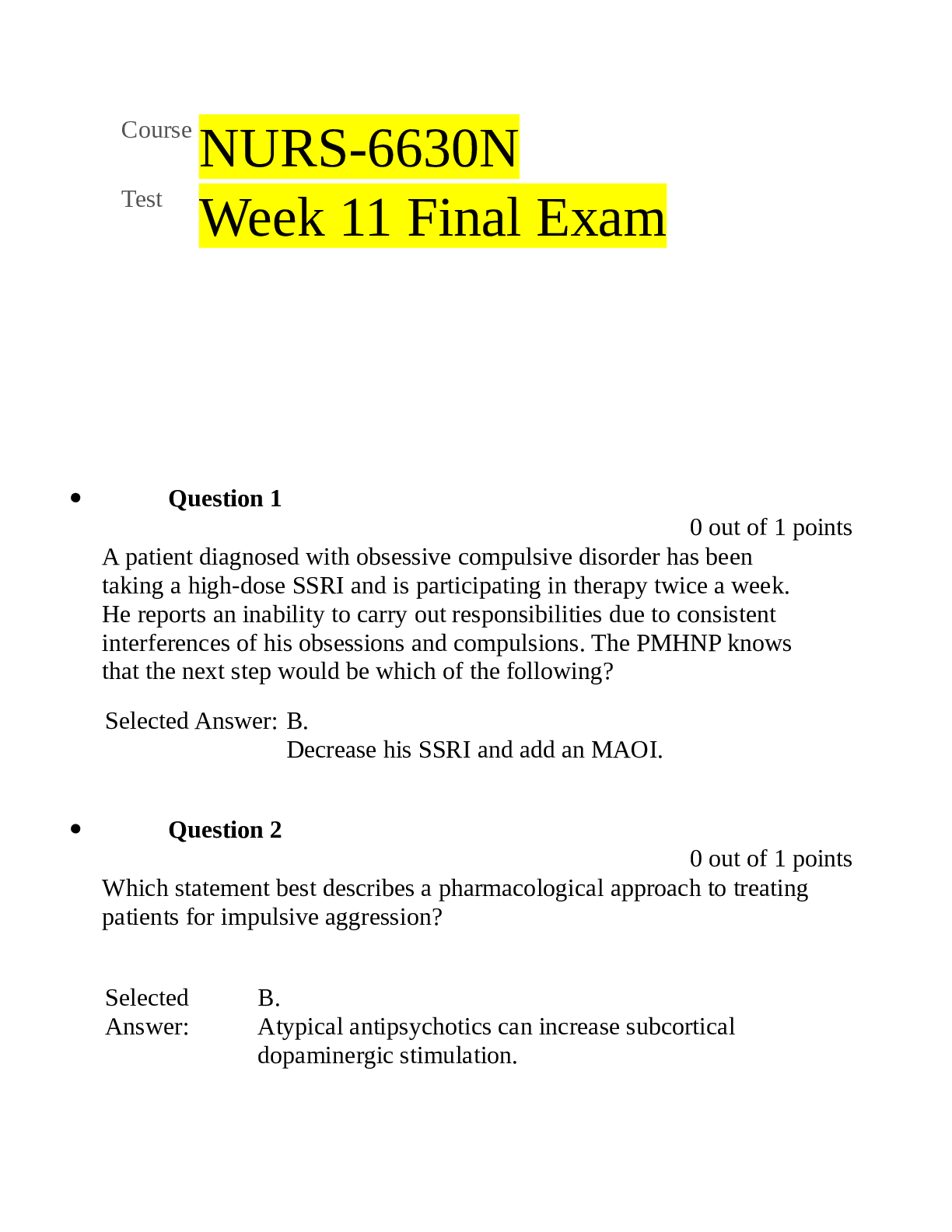Financial Accounting > EXAM > ACCT 504 Final Exam 100% Answers /Keller Graduate School of Management (All)
ACCT 504 Final Exam 100% Answers /Keller Graduate School of Management
Document Content and Description Below
ACCT 504 Final Exam (TCO A) A corporation has which of the following advantages? (Points : 5) Reduced taxes Simple to set up Limited liability for stockholders Owner maintains control Question 2.2. (T... CO A) Dividends flow through which one of the following statements? (Points : 5) The Balance Sheet The Statement of Retained Earnings The Income Statement None of the above Question 3.3. (TCOs A and B) Below is a partial list of account balances for LBJ Company. Cash $12,000 Prepaid rent 1,300 Accounts receivable 7,000 Accounts payable 5,000 Notes payable 9,000 Common stock 22,000 Dividends 2,000 Revenues 45,000 Expenses 35,000 What did LBJ Company show as total debits? (Points : 5) $57,300 $81,000 $55,300 $56,000 Question 4.4. (TCO B and E) Under cashbasis accounting, which of the following transactions would not be recorded? (Points : 5) Cash sales to customers Payments to vendors Sales on account Payroll payments to employees Question 5.5. (TCO D) If ending inventory of the current year is understated (Points : 5) Cost of goods sold for the current year will be understated Gross profit for the current year will be unaffected Gross profit for the current year will be understated Net income for the current year will be overstated Question 6.6. (TCO A and E) Equipment was purchased for $27,000. Freight charges amounted to $1,000 and there was a cost of $5,000 for building a foundation and installing the equipment. It is estimated that the equipment will have a $5,000 salvage value at the end of its 7year useful life. Depreciation expense each year using the straightline method will be . (Points : 5) $4,714 $4,000 $3,857 $3,285 Question 7.7. (TCOs D and G) When the market rate of interest exceeds the stated rate of interest on the bond, the bond will require . (Points : 5) a debit to Discount on Bonds Payable a credit to Premium on Bonds Payable a debit to Loss on Bonds Payable a credit to Gain on Bonds Payable Question 8.8. (TCO C) Which inventory accounting system does not require a physical count of the inventory at the year end? (Points : 5) Periodic inventory system Perpetual inventory system Specific Identification None of the above Question 9.9. (TCO F) Horizontal analysis is also known as . (Points : 5) ratio analysis vertical analysis commonsize analysis trend analysis Question 10.10. (TCO F) When performing a commonsize balance sheet, the 100% figure is . (Points : 5) net sales total liabilities total assets total equity Question 11.11. (TCO F) Ratios are most useful in expressing . (Points : 5) causeandeffect relationships the relationships between numbers the delta between numbers the root cause of the problem Question 12.12. (TCO F) Creditors are usually most concerned with analyzing . (Points : 5) the company stock price turnover liquidity profitability Question 13.13. (TCO F) Shareholders are usually most interested in evaluating . (Points : 5) profitability leverage turnover the ability to pay debts as they come due Question 14.14. (TCO G) To calculate the market value of a bond, we need to . (Points : 5) multiply the stated rate times the bond’s face value calculate the present value of the principal only calculate the present value of both the principal and the interest calculate the present value of the interest only 1. TCO A) Below you will find selected information (in millions) from Coca-Cola Co.’s 2012 Annual Report. Income Taxes Payable $471 Short-term Investments and Marketable Securities 8,109 Cash 8,442 Other non-current Liabilities 10,449 Common Stock 1,760 Receivables 4,812 Other Current Assets 2,973 Long-term Investments 10,448 Other Non-current Assets 3,585 Property, Plant and Equipment 23,486 Trademarks 6,527 Other Intangible Assets 20,810 Allowance for Doubtful Accounts 53 Accumulated Depreciation 9,010 Accounts Payable 8,680 Short Term Notes Payable 17,874 Prepaid Expenses 2,781 Other Current Liabilities 796 Long-Term Liabilities 14,736 Paid-in-Capital in Excess of Par Value 11,379 Retained Earnings 55,038 Inventories 3,264 Treasury Stock 35,009 Other information taken from the Annual Report. Sales Revenue for 2012 $48,017 Cost of Goods Sold for 2012 19,053 Net Income for 2012 9,019 Inventory Balance on 12/31/11 3,092 Net Accounts Receivable Balance on 12/31/11 4,920 Total Assets on 12/31/11 79,974 Equity Balance on 12/31/11 31,921 2. TCO B) The following selected data was retrieved from the Walmart, Inc. financial statements for the year ending January 31, 2013. Accounts Payable $38,080 Accounts Receivable 6,768 Cash 7,781 Common Stock 3,952 Cost of Goods Sold 352,488 Income Tax Expense 7,981 Interest Expense 2,064 Membership Revenues 3,048 Net Sales 466,114 Operating, Selling and Administrative Expenses 88,873 Retained Earnings 72,978 Required: 1: Using the information provided above, prepare a multiple-step income statement. 2: Calculate the Profit Margin, and Gross profit rate for the company. Be sure to provide the formula you are using, show your calculations, and discuss your findings and results. (Points : 36) 45. (TCO C) Please review the following real-world Hewlett Packard Statement of Cash flows and address the two questions below. Cash flow from operating activities In millions In millions For the year ended 2012 For the year ended 2011 Net (loss) earnings $(12,650) $7,074 Depreciation and amortization 5,095 4,984 Impairment of goodwill and purchased intangible assets Stockbased compensation expense 18,035 885 635 685 Provision for doubtful accounts 142 81 Provision for inventory 277 217 Restructuring charges 2,266 645 Deferred taxes on earnings (711) 166 Excess tax benefit from stock (12) (163) based competition Other, net 265 (46) Accounts and financing receivables Inventory 890 (1,252) Accounts payable (1,414) 275 Taxes on earnings (320) 610 Restructuring (840) (1,002) Other assets and liabilities (2,356) (293) Net cash provided by operating activities 10,571 12,639 Cash flows from investing activities: Investment in property, plant, and Proceeds from sale of property, Purchases of availableforsale securities and other investments Maturities and sales of available forsale securities and other investment Payments in connection with business acquisitions, net of cash acquired Proceeds from business Net cash used in investing activities Cash flow from financing activities: (Payments) issuance of commercial paper and notes payable, net Issuance of debt Payment of debt [Show More]
Last updated: 1 year ago
Preview 1 out of 16 pages
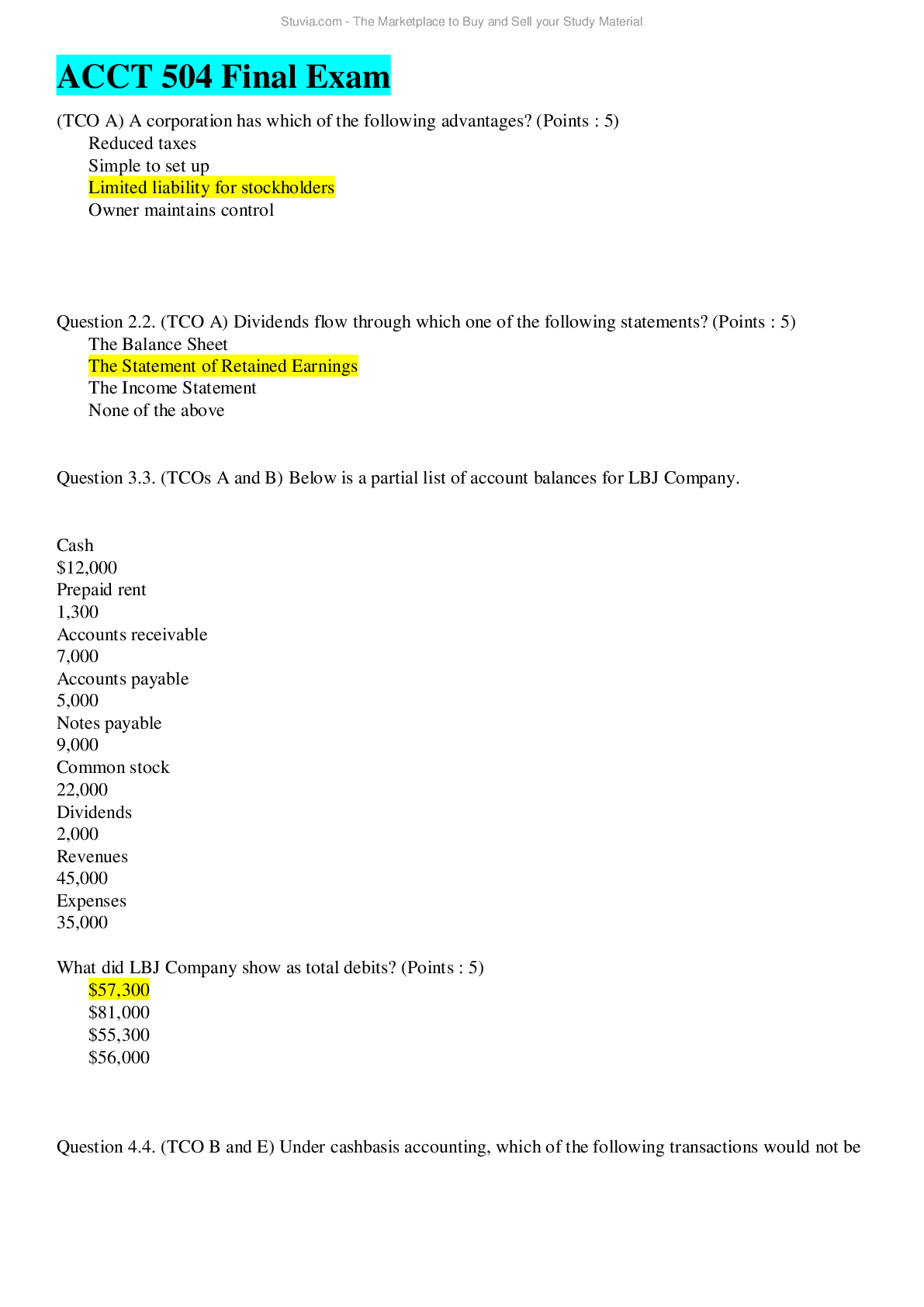
Reviews( 0 )
Document information
Connected school, study & course
About the document
Uploaded On
Jun 28, 2021
Number of pages
16
Written in
Additional information
This document has been written for:
Uploaded
Jun 28, 2021
Downloads
0
Views
36

